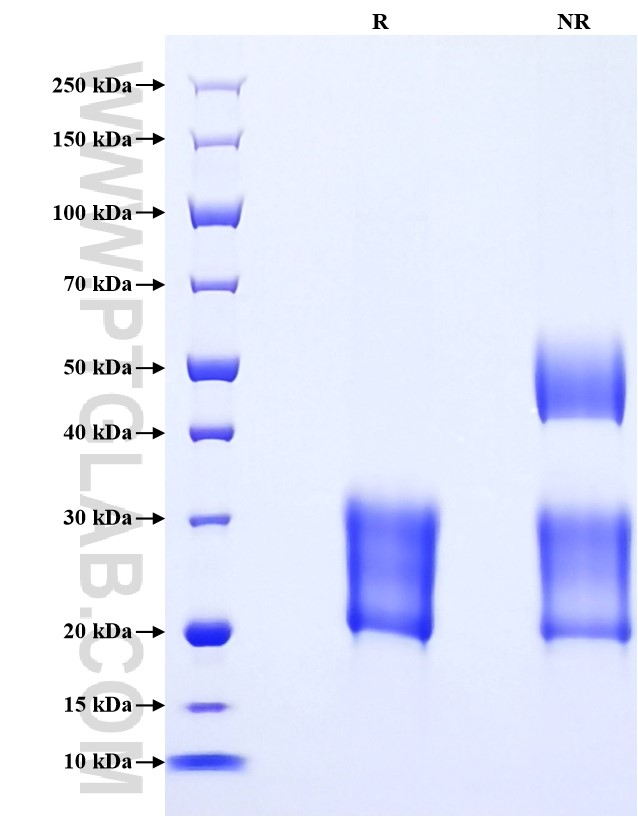Recombinant Human CEACAM-3 protein (Myc Tag, His Tag)
种属
Human
纯度
>90 %, SDS-PAGE
标签
Myc Tag, His Tag
生物活性
未测试
验证数据展示
产品信息
| 纯度 | >90 %, SDS-PAGE |
| 内毒素 | <0.1 EU/μg protein, LAL method |
| 生物活性 |
Not tested |
| 来源 | HEK293-derived Human CEACAM-3 protein Lys35-Gly155 (Accession# P40198-1) with a Myc tag and a His tag at the C-terminus. |
| 基因ID | 1084 |
| 蛋白编号 | P40198-1 |
| 预测分子量 | 18.1 kDa |
| SDS-PAGE | 20-32 kDa, reducing (R) conditions |
| 组分 | Lyophilized from 0.22 μm filtered solution in PBS, pH 7.4. Normally 5% trehalose and 5% mannitol are added as protectants before lyophilization. |
| 复溶 | Briefly centrifuge the tube before opening. Reconstitute at 0.1-0.5 mg/mL in sterile water. |
| 储存条件 |
It is recommended that the protein be aliquoted for optimal storage. Avoid repeated freeze-thaw cycles.
|
| 运输条件 | The product is shipped at ambient temperature. Upon receipt, store it immediately at the recommended temperature. |
背景信息
Carcinoembryonic antigen-related cell adhesion molecules (CEACAMs) belong to the immunoglobulin superfamily of cell adhesion molecules. CEACAMs play major roles in cell-cell and cell-ECM adhesion and have been implicated in controlling cell proliferation, angiogenesis, and tissue remodeling. CEACAM3, also named as CD66d and CGM1, is exclusively expressed on granulocytes and acts as the major granulocyte receptor mediating recognition and efficient opsonin-independent phagocytosis of CEACAM-binding microorganisms, including Neissiria, Moxarella and Haemophilus species. CEACAM3 plays an important role in the clearance of pathogens by the innate immune system. It is responsible for RAC1 stimulation in the course of pathogen phagocytosis.
参考文献:
1. Stefan Pils, et al. (2008) Int J Med Microbiol. 298(7-8):553-60. 2. Sarina Cameron, et al. (2012) Mol Cancer. 11:74. 3. Patrizia Bonsignore, et al. (2020) Front Immunol. 10:3160.
